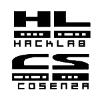New generation Ninux Firmware
Indice
Wishlist
Ecco cosa vorremmo dal nuovo firmware di Ninux! Se avete delle richieste per alcune caratteristiche che vorreste veder sviluppate nel nuovo firmware, parlatene a riunione o in mailing list.
I ticket aperti per i progetti attuali sono visibili sul nostro track.
obiettivo |
stato |
descrizione |
||
|
Ogni apparato deve autoconfigurarsi i settaggi relativi alla configurazione di rete |
|||
|
Ogni apparato deve autoconfigurare il canale radio in modo da comunicare con gli altri apparati della mesh |
|||
|
Gli utenti collegati alla rete ninux devono visualizzare una pagina iniziale (splash page) che li informi su chi siamo e perchè facciamo una cosa del genere. |
|||
|
Pensare ad un meccanismo per aggiornare in maniera automatica i firmware dei vari apparati. |
Autoconfigurazione IP
Creare un plugin per OLSR che si occupi di autoconfigurare gli indirizzi IPv4 dei nodi attraverso meccanismi di Duplicate Address Detection (vedi sotto).
La filosofia progettuale prevede la coesistenza tra nodi e interfacce configurate automaticamente e altre configurate manualmente.
All'avvio configura in modalità ad-hoc tutte le interfacce su cui è stato lanciato OLSR ad eccezione di quelle elencate nel parametro exclude-if
- Assegna ad ogni interfaccia da autoconfigurare, un indirizzo IP del tipo 172.17.X.Y, dove X.Y sono gli ultimi 2 byte del MAC. I primi 256 valori pero' sono riservati a configurazioni manuali. Nel caso dovessero coincidere con i valori dell'ultimo byte del mac, si utilizza un IP casuale
Configura il conf di dnsmasq per per rilasciare indirizzi IP nella classe 1.X.Y.0/24 con lease-time = interval, dove X e Y sono presi dagli ultimi due byte dell'indirizzo primario del nodo.
- Annuncia le HNA scritte in olsrd.conf e le HNA autogenerate, e tutte le interfacce di rete su cui è attivo OLSR
- In caso riceva un MAD con unique address maggiore che collide con una delle sue interfacce, il plugin deve cambiare l'ip dell'interfaccia
ogni volta che il plugin effettua un cambio di indirizzo IP di un interfaccia, lo scrive nel parametro saved-conf, in modo da ricordarselo al prossimo reboot
Parametri del Plugin
PlParam "interval" "3.4" PlParam "unique_addr" "" PlParam "mode" "auto" PlParam "exclude-if" "ath1" PlParam "dnsmasq-autoconf" "ath1" PlParam "saved-conf" "ath1:172.17.2.56;ath2:172.17.6.98"
Duplicate Address Detection
In draft-laouiti-manet-olsr-address-autoconf-01 è presentato un sistema di DaD semplice ma attivo che utilizza dei nuovi messaggi OLSR (MAD). Un DaD passivo invece è descritto in
Per quale motivo utilizzare i MAD e non guardare semplicamente gli HELLO/TC/MID:
- I tempi sono diversi. I MAD verranno emessi con meno frequenza dei topology change
- I nodi non sono costretti a parsare tutti i TC/HELLO/MID che vedono
I nodi non sanno distiguere un proprio TC inviato in flooding da quello generato da un nodo diverso ma con stesso indirizzo IP
Per ulteriori argomentazioni, consultare documenti su olsr ,vedere NOA OLSR draft-laouiti-manet-olsr-address-autoconf-01 e draft-weniger-autoconf-pdad-olsr-01
Autoconfigurazione canali
L'idea più semplice è di fare una scansione alla ricerca di una rete con un dato essid. Se non è presente, allora l'AP va su un canale predefinito (ad es. il 6). Tempo permettendo, potremmo pensare a dei meccanismi più simpatici per la scelta del canale migliore.
Splash Page
Realizzare una splash page in Luci/Lua ed integrarla con un sistema di chat.
E' gia' stato portato il server jabber Prosody su OpenWRT, mentre siamo a buon punto con lo sviluppo del pacchetto della splash page che si chiama "nowolfsplash".
Ecco come installare il tutto, ovvero i comandi da dare sull'access point.
Installare Prosody (il server jabber)
cd /tmp wget http://test.ninux.org/~orazio/bin/packages/mips/prosody_0.4.0-1_mips.ipk wget http://test.ninux.org/~orazio/bin/packages/mips/libidn_1.12-1_mips.ipk wget http://test.ninux.org/~orazio/bin/packages/mips/luaexpat_1.1-1_mips.ipk wget http://test.ninux.org/~orazio/bin/packages/mips/luasocket_2.0.2-2_mips.ipk wget http://test.ninux.org/~orazio/bin/packages/mips/luasec_0.3-1_mips.ipk wget http://test.ninux.org/~orazio/bin/packages/mips/libexpat_1.95.8-1_mips.ipk wget http://test.ninux.org/~orazio/bin/packages/mips/libopenssl_0.9.8i-3_mips.ipk wget http://test.ninux.org/~orazio/bin/packages/mips/zlib_1.2.3-5_mips.ipk wget http://test.ninux.org/~orazio/bin/packages/mips/liblua_5.1.4-2_mips.ipk ipkg install zlib_1.2.3-5_mips.ipk liblua_5.1.4-2_mips.ipk libidn_1.12-1_mips.ipk libopenssl_0.9.8i-3_mips.ipk libexpat_1.95.8-1_mips.ipk luaexpat_1.1-1_mips.ipk luasocket_2.0.2-2_mips.ipk luasec_0.3-1_mips.ipk prosody_0.4.0-1_mips.ipk
Installare NoWolfSplash (il captive portal)
cd /tmp wget http://test.ninux.org/~orazio/bin/packages/mips/nowolfsplash_0.1-1_mips.ipk wget http://test.ninux.org/~orazio/bin/packages/mips/at_3.1.10ubuntu4-2_mips.ipk wget http://test.ninux.org/~orazio/bin/packages/mips/libelf_0.8.10-1_mips.ipk opkg install libelf_0.8.10-1_mips.ipk at_3.1.10ubuntu4-2_mips.ipk nowolfsplash_0.1-1_mips.ipk
Configurare NoWolfSplash
- Cambiare la porta di default del server http di busybox, modificando il file /etc/config/httpd nel seguente modo
config 'httpd'
option 'port' '8080'
option 'home' '/www'- in /usr/lib/prosody/modules/mod_httpserver.lua modificare l'http_base e la porta su cui gira il server http di prosody:
local http_base = "/www";
e
httpserver.new{ port = 80, base = "files", handler = handle_request, ssl = false}il file di configurazione di prosody (/etc/prosody/prosody.cfg.lua) deve assomigliare a una cosa del genere: http://test.ninux.org/~orazio/prosody.cfg.lua
http://IP_ROUTER/files/luci-static/muckl/index.html
Altre configurazioni "standard" del router:
NON mettere l'access point in modalità bridge, farlo lavorare da router. Basta andare ad editare i file /etc/config/network e /etc/config/wireless sulla falsa riga di questi due esempi: network e wireless
- impostate se volete il dhcp server per dare indirizzi IP ai client che si connettono (altrimenti, per provarlo potete assegnarvi manualmente un IP coerente con la sottorete che avete settato)
- fermate il firewall di openwrt (/etc/init.d/firewall stop) e date una regola di masquerading (iptables -t nat -A POSTROUTING -j MASQUERADE)
- modificate il file /etc/init.d/nowolfsplash per inserire l'IP del vostro AP al posto di GATEWAY_IP
- avviate lo script con /etc/init.d/nowolfsplash start
Installare Muckl (la chat javascript)
copiare il file http://test.ninux.org/~orazio/muckl_ninux.tar in temp e scompattarlo in /www/luci-static/muckl
- aggiungere il seguente account su prosody creando il file /etc/prosody/data/localhost/accounts/muckl.dat fatto cosi':
return {
["password"] = "muckl",
}
Spiegazione Dopo tutti questi passaggi ![]() ciò che otteniamo è questo:
ciò che otteniamo è questo:
- Una client si associa al nostro access point ed effettua la richiesta di una pagina web
- iptablel redirige la richiesta sulla porta 8082 dell'access point
- su questa porta c'e' lo script "nowolfsplash" che effettua un HTTP redirect sulla porta 8080 sempre dell'access point, dove il visitatore trova la splash page
- una volta che avra' accettato, uno script in LUCI prende il MAC address del visitatore e lo abilita alla navigazione redirigendolo su google e aprendo una chat in un frame. La chat è disponibile sulla porta 80 del router
Aggiornamento automatico del Firmware
Meccanismi per la gestione degli apparati: flashing di un firmware da remoto "fonera style".








